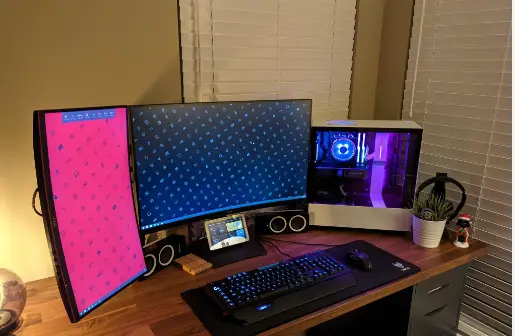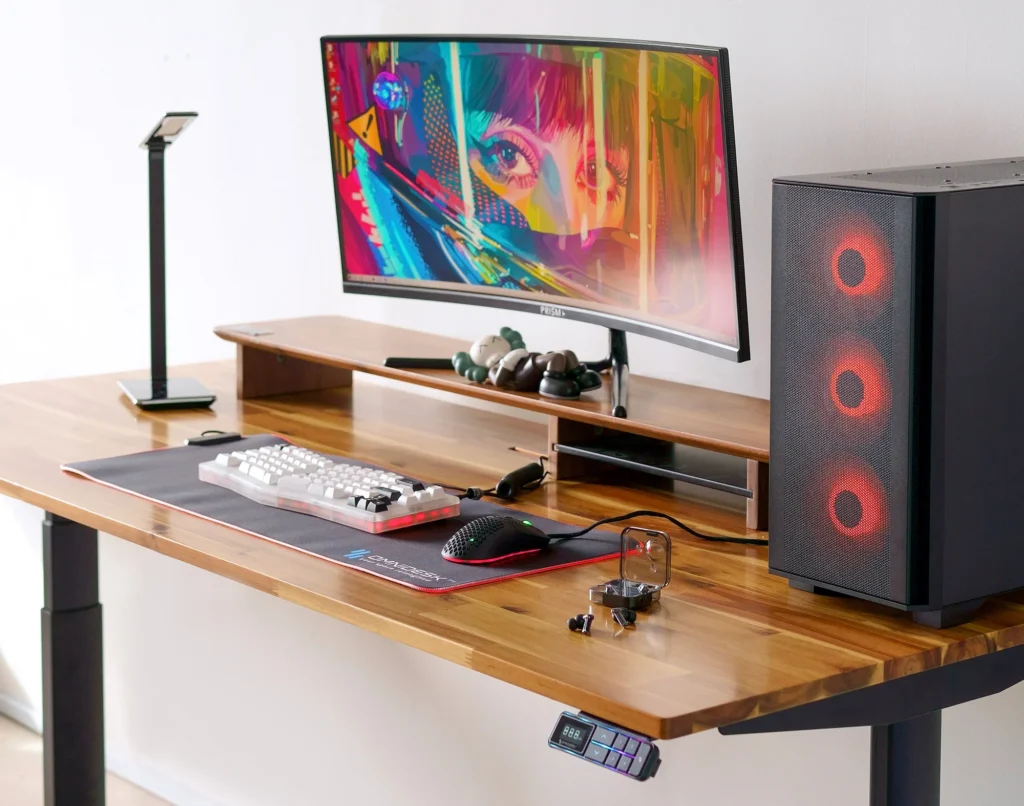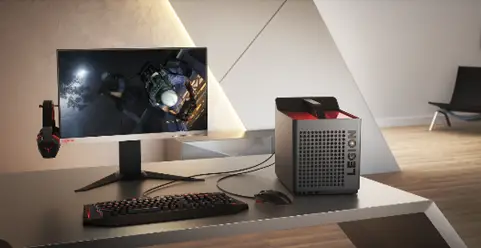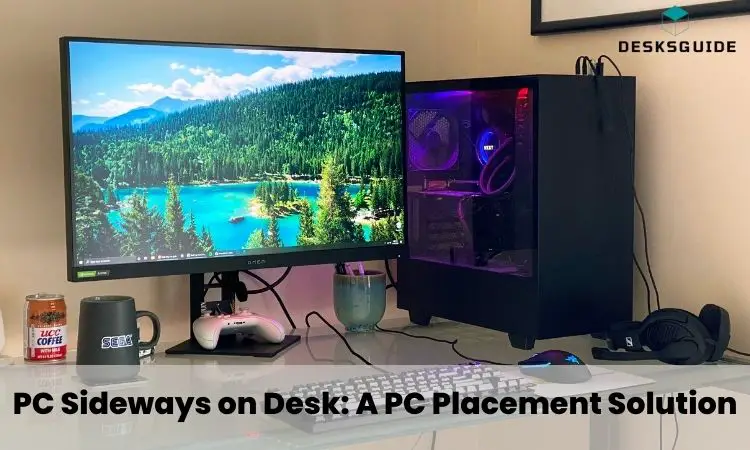People often get confused is it okay to place their pc on sideways of the desk or not. Placing the pc on the desk is a crucial option for users. That’s why it’s necessary to know the right ways.
So, can you place the PC sideways on desk?
Yes, it’s possible to place your pc on sideways of a desk. But you need to pay attention to the right airflow. A sideways PC on a desk can offer benefits such as space-saving, improved accessibility, and enhanced stability. However, it’s necessary to consider factors like potential DVD drive limitations, and dust accumulation, hardware compatibility before placing the pc.
There is a lot to know about placing your pc sideways on the desk. To discover more about this issue go through the article.
Can I Lay My PC sideways on a desk?
Yes, you can lay your PC sideways on a desk. However, there are a few factors to consider before doing so.

Airflow:
Desktop computers have case fans and vents that help cool the internal components. Laying a vertical tower computer on its side may potentially restrict the airflow.
Because these computers typically take in cold air from the floor and expel it as it rises. To ensure adequate airflow, ensure no vents or fan openings are blocked when laying your PC on its side.
Hard Drive Orientation:
There is a common misconception that placing a hard drive on its side or upside down can cause issues.
However, both traditional hard drives and solid-state drives (SSDs) are designed to function properly in any orientation. Having them on their side will not hinder their operation.
Hardware Compatibility:
Before placing your PC sideways, ensure that the hardware components are suitable for this orientation. Check that everything inside the PC is securely attached to the appropriate brackets to prevent any potential issues.
CD/DVD Drive Challenges:
When placing the computer on its side, be aware that inserting CDs/DVDs into the drive may become problematic. Because they have a tendency to fall out. The CD/DVD trays work best in a horizontal position.
So, consider alternative options such as a trayless design or securing the drive to prevent this issue. However, the latest drives contain small clips across all corners of the circle keeping the tray secure.
Component Orientation:
Ensure that the motherboard’s component side is facing upward to avoid any potential issues due to gravity. Also if you have a subwoofer you can place it on the floor under your desk.
The bottom line is that laying your PC on its side can be acceptable. Just make sure you mount it correctly and allow adequate airflow. And for additional support and guidance, contact the manufacturer, especially for a gaming PC.
Step-By-Step Instructions on How to Place a PC Sideways on a Desk

To place a PC sideways on a desk, follow these step-by-step instructions:
- Turn off the computer and disconnect all cables and peripherals.
- Gently lay the computer on its side, ensuring that the component side of the motherboard faces upward.
- Check that no vents or fan openings are obstructed to maintain proper airflow.
- To prevent discs from falling out of a CD or DVD drive, make sure it is securely latched or trayless.
- To prevent the computer from sliding or moving, consider using rubber holders or pads underneath.
- Once the computer is in place, reconnect all cables and peripherals.
- Power on the computer and ensure it functions correctly.
Remember, it’s always efficient to consult the user manual or the manufacturer’s website for specific guidance. They’ll provide guidance on the proper placement of your particular PC model.
Benefits And Drawbacks of Placing a PC Sideways on a Desk
There are certain benefits of placing a PC sideways on a desk such as-

- Space-saving: Sideways placement allows for efficient utilization of limited desk space. As standing desks are quite expensive, people like to utilize as much space as possible.
- Aesthetics: Horizontal positioning can create a sleek and streamlined appearance.
- Accessibility: Easier access to ports, cables, and components on the back of the PC for convenient device connections.
Also, there’re some drawbacks to placing a PC sideways on a desk too.
- Airflow restriction: Sideway placement may impede proper airflow and cooling, potentially leading to higher temperatures and reduced performance. Ensuring no vents or fan openings are covered is crucial.
- DVD drive limitations: If the PC has a tray-based DVD drive, horizontal placement may cause discs to fall out. Consider using latches or a trayless load to mitigate this issue.
- Dust accumulation: Placing the PC on the desk can expose it to more dust, necessitating regular cleaning to prevent performance issues. Also, if your desk has leftover food it can attract ants and it can cause harm to your electrical devices.
It’s important to review the user manual or manufacturer’s guidelines specific to your PC model before deciding on sideways placement.
Frequently Asked Questions (FAQs):
Why Not Put PCs on The Floor?
Putting PCs on the floor will be problematic to interact with and harder to reach. This will hinder the smooth usage of your PC. Also, there’ll be problems such as ventilation and dust on the floor, thus leading to overheating.
Why Is A PC on The Desk Better?
Having the PC on a desk makes it easier to clean and maintain. It allows us to do regular cleaning to prevent the buildup of debris. Also, you’ll have ease of access and smooth interaction with your PC on the desk.
How Do I Turn My Monitor Vertically?
Right-clicking on an empty area of your desktop background. Choose “Display Settings.” Scroll down to find the “Display Orientation” option. Select this option and use the dropdown menu to switch the display orientation from Landscape to Vertical.
Conclusion
Now you know if is it possible to place your pc sideways on desk.
Placing PCs sideways on a desk reduces the chances of accidental tipping or the computer being knocked off the desk. It is especially useful if the workspace setup poses an instability risk or is limited in space.
Read also: Gaming Desk vs Regular Desk (What are the 09 Significant Differences)

